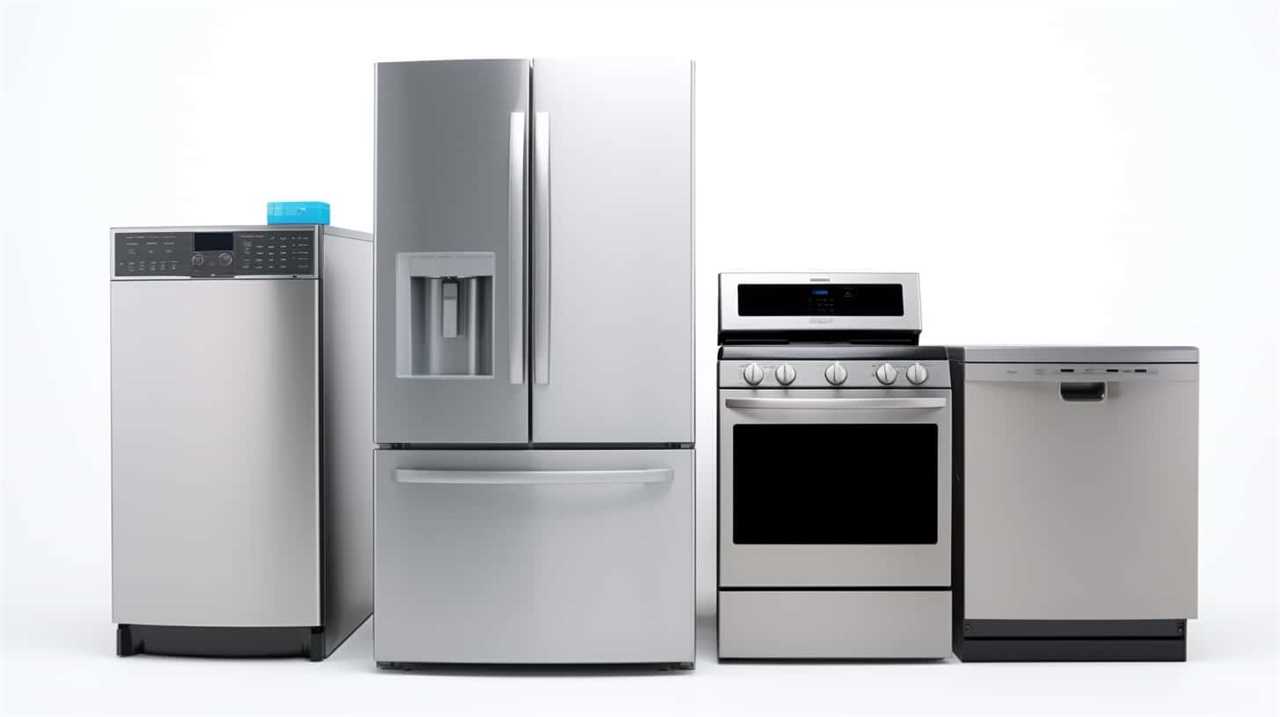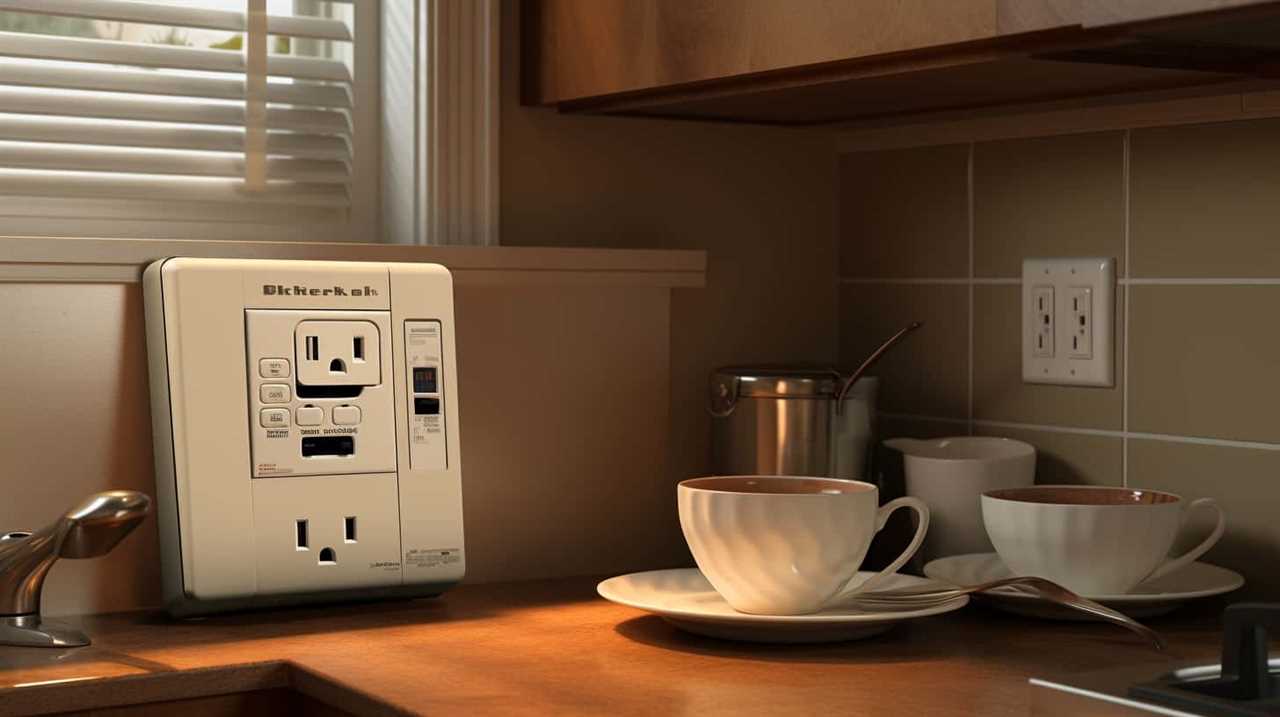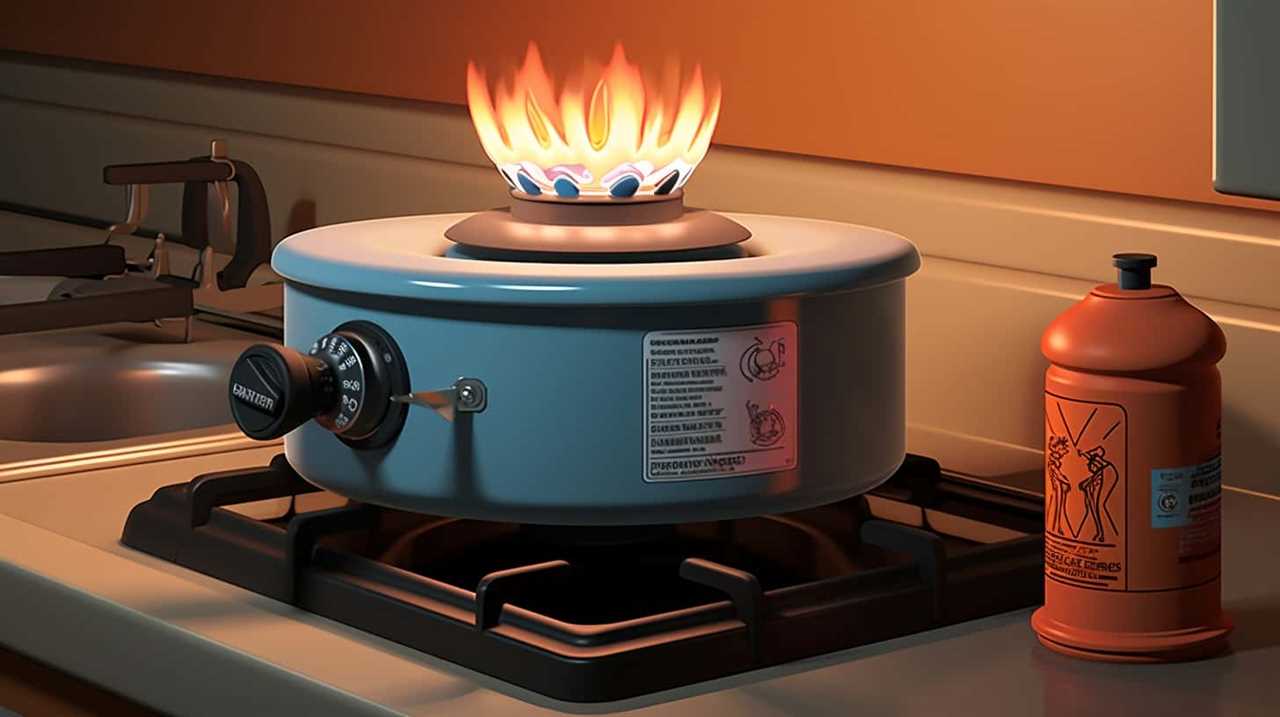Have you ever questioned why appliances appear to be so expensive? Let’s explore the economic factors that have led to the increase in their prices.
From the increasing costs of raw materials to the impact of inflation, there are various influences at play. Technological advancements, manufacturing expenses, brand reputation, consumer demand, supply chain disruptions, and competition all contribute to the high price tags.
Join us as we uncover the intricate web of factors behind the expensive world of appliances.
Key Takeaways
- Factors such as increasing production costs, rising labor costs, and fluctuating raw material prices contribute to the overall expensive nature of appliances.
- Technological advancements drive up appliance prices as manufacturers constantly introduce innovative features and functionalities that require significant investment in research and development.
- Manufacturing and distribution expenses, including fluctuations in raw material costs and skilled labor, also impact the final price of appliances.
- Energy efficiency regulations aimed at reducing environmental impact result in higher manufacturing and distribution expenses, which are passed on to consumers. However, long-term energy savings offset these initial higher costs.
Economic Factors Driving up Appliance Prices
One of the main factors contributing to the high prices of appliances is the increase in production costs due to economic factors.

In today’s global market dynamics, the cost of labor has been steadily rising, impacting the manufacturing process of appliances. As wages increase, so does the expense of hiring skilled workers to assemble and produce these appliances. This rise in labor costs directly affects the final price consumers have to pay.
Additionally, global market dynamics play a significant role in driving up appliance prices. Fluctuating exchange rates, import/export tariffs, and trade agreements all impact the cost of raw materials and components used in appliance production. These economic factors create a domino effect, ultimately leading to higher prices for appliances in the market.
Understanding these underlying factors can help consumers make informed decisions when purchasing appliances.
Increasing Costs of Raw Materials
As we move into the discussion of the increasing costs of raw materials, let’s delve into how these factors further contribute to the high prices of appliances. One of the key reasons behind the rising costs of appliances is the increased manufacturing costs resulting from the fluctuating commodity prices. The prices of raw materials such as steel, copper, and aluminum have been known to vary significantly over time, impacting the overall cost of production. To illustrate this point, consider the following table:

| Raw Material | Average Price Increase (%) | Impact on Appliance Prices |
|---|---|---|
| Steel | 10% | Higher production costs |
| Copper | 15% | Increased component costs |
| Aluminum | 12% | Expensive manufacturing |
These rising costs of raw materials directly affect the manufacturers, who then pass on these expenses to consumers in the form of higher appliance prices. The impact of inflation on appliance prices will be discussed in the next section.
Impact of Inflation on Appliance Prices
When it comes to understanding the impact of inflation on appliance prices, there are several key points to consider.
Firstly, inflation can directly affect the prices of appliances by increasing the overall cost of production, including raw materials, labor, and transportation. This leads to higher prices for consumers.
Additionally, rising inflation can also impact the purchasing power of consumers, making it more difficult for them to afford appliances, further influencing the demand and pricing dynamics in the market.

Inflation’s Effect on Prices
Our research indicates that the impact of inflation on appliance prices has been significant. As inflation rises, so do the prices of appliances. Here are four key factors explaining the effect of inflation on appliance prices:
- Increased production costs: As inflation drives up the cost of raw materials, manufacturers face higher expenses for producing appliances. These costs are then passed on to consumers.
- Global economic trends: Fluctuations in global economies can affect the value of currencies, which in turn impacts the prices of imported appliances. Inflation in one country can lead to higher prices for appliances imported from that country.
- Demand and supply dynamics: Inflation can influence consumer demand and affect the supply chain. If demand for appliances remains strong during inflationary periods, manufacturers may increase prices due to limited supply.
- Market competition: Inflation can put pressure on manufacturers to maintain profit margins. As costs rise, manufacturers may adjust their prices to remain competitive in the market.
Understanding the impact of inflation on appliance prices is crucial in explaining the rising costs of appliances in today’s market.
Rising Appliance Costs
Appliance prices have seen a significant increase due to the impact of inflation. Rising production costs and global economic trends have played a crucial role in driving up the prices of appliances.
Over the past few years, the cost of raw materials, such as steel and copper, has surged, leading to higher manufacturing expenses. This, coupled with increasing labor costs and transportation expenses, has put pressure on appliance manufacturers to raise their prices.

Additionally, global economic trends, such as fluctuations in exchange rates and trade policies, have further contributed to the rising costs of appliances. These factors have forced manufacturers to pass on the increased costs to consumers, resulting in higher prices for appliances.
As a result, consumers are now faced with the challenge of finding affordable appliances that meet their needs.
Economic Factors Influencing Prices
As consumers, we’re impacted by the rising prices of appliances due to the influence of inflation. Economic factors such as increasing labor costs and currency exchange rates play a significant role in determining the prices of appliances. Here are four key points to consider:
- Increasing labor costs: When the cost of labor rises, it directly affects the production cost of appliances. Manufacturers may pass on these increased costs to consumers, resulting in higher prices.
- Currency exchange rates: Fluctuations in currency exchange rates can impact the cost of imported appliances. If the value of the currency in the country of production decreases, it becomes more expensive to import appliances, leading to higher prices for consumers.
- Raw material prices: The cost of raw materials used in appliance production, such as metals and plastics, can also impact prices. If the prices of these materials increase, manufacturers may adjust their prices accordingly.
- Supply and demand: The balance between supply and demand can also influence prices. If there’s high demand for appliances but limited supply, manufacturers may increase prices to maximize profits.
Understanding these economic factors can help consumers make informed decisions when purchasing appliances and anticipate potential price increases.

Technological Advancements and Their Influence on Pricing
We frequently see how technological advancements drive up the prices of appliances. As technology continues to advance at a rapid pace, manufacturers are constantly introducing innovative features and functionalities in their products. These advancements, however, come at a cost. The incorporation of new technologies requires significant investment in research and development, as well as the production and implementation of new components and systems. This inevitably leads to higher production costs, which are then passed on to consumers through higher prices. Additionally, technological advancements often result in improved efficiency and performance, which further justifies the higher price point. To illustrate the impact of technological advancements on pricing, consider the following table:
| Technology | Impact on Pricing |
|---|---|
| Advanced sensors | Higher price due to increased accuracy and functionality |
| Smart home integration | Higher price due to added convenience and connectivity |
| Energy-efficient features | Higher price due to reduced energy consumption and cost savings |
Manufacturing and Distribution Expenses
To understand the pricing of appliances, it’s important to consider the significant expenses associated with manufacturing and distribution. These expenses have a profound economic impact and are influenced by the global market.
Here are four key factors that contribute to the high costs:
- Raw materials: The manufacturing process requires various raw materials, such as metals, plastics, and electronic components. Fluctuations in the prices of these materials can significantly impact the overall cost of production.
- Labor costs: Skilled labor is essential for manufacturing appliances. Higher wages in certain regions or countries can increase manufacturing expenses.
- Research and development: Manufacturers invest heavily in research and development to create innovative and efficient appliances. These costs are spread across the final product, making it more expensive.
- Distribution networks: Appliances need to be transported and distributed to retailers or customers. The logistics involved, including warehousing, transportation, and import/export fees, add to the overall cost.
Considering these expenses, it becomes apparent why appliances can be expensive. However, there are additional factors to consider, such as energy efficiency regulations and their effect on prices.

Energy Efficiency Regulations and Their Effect on Prices
The impact of energy efficiency regulations on appliance prices is significant due to their influence on manufacturing and distribution expenses. Energy efficiency regulations aim to reduce the environmental impact of appliances by promoting the use of energy-efficient technologies.
While these regulations contribute to a greener future, they also have an effect on consumer affordability. Manufacturers are required to invest in research and development to meet the stringent energy efficiency standards, which can increase their production costs. Additionally, the implementation of these regulations may require changes in manufacturing processes and the use of more expensive materials.
These factors contribute to higher manufacturing and distribution expenses, which ultimately get passed on to the consumers in the form of higher appliance prices. However, it’s important to note that the long-term energy savings resulting from energy-efficient appliances can offset the initial higher costs for consumers.
Impact of Tariffs and Trade Policies on Appliance Costs
Continuing from the previous subtopic, the impact of tariffs and trade policies on appliance costs is another factor that contributes to the overall expense of appliances. Trade policies and the imposition of tariffs can have a significant impact on the price of appliances. Here are four ways in which tariffs and trade policies affect appliance costs:

- Increased import costs: Tariffs on imported appliances can raise the cost of bringing these products into the country, leading to higher prices for consumers.
- Reduced competition: Trade policies that limit the entry of foreign appliances can reduce competition, allowing domestic manufacturers to increase prices.
- Supply chain disruptions: Trade disputes and tariff wars can disrupt global supply chains, leading to shortages and higher prices for appliances.
- Retaliatory tariffs: When one country imposes tariffs on appliances from another country, the affected country may retaliate with its own tariffs, resulting in higher prices for consumers.
These factors highlight the complex relationship between tariffs, trade policies, and appliance costs. Understanding their impact is crucial for consumers and policymakers alike.
Brand Reputation and Its Contribution to Higher Prices
Building on our previous discussion of the impact of tariffs and trade policies on appliance costs, let’s now delve into the role of brand reputation in contributing to higher prices.
Brand loyalty and consumer perception play significant roles in determining the price of appliances. Established brands with a long-standing reputation for quality and reliability often charge higher prices due to the trust they’ve built with consumers over time. Consumers are willing to pay a premium for these trusted brands because they believe that they’ll receive a superior product.
Additionally, the perception of higher quality associated with reputable brands can justify the higher price tag. This perception is often reinforced through marketing efforts and positive reviews from satisfied customers.

As we transition to the next section, it’s important to understand how consumer demand influences pricing strategies.
Consumer Demand and Its Influence on Pricing Strategies
When it comes to understanding why appliances are so expensive, one important factor to consider is consumer demand and its influence on pricing strategies.
Supply and demand dynamics play a significant role in shaping the prices of appliances. As consumer behavior changes and preferences shift, manufacturers and retailers adjust their pricing strategies to meet the demands of the market.
This interplay between consumer demand and pricing strategies ultimately determines the cost consumers pay for appliances.

Supply and Demand
As consumers, we can better understand why appliances are so expensive by examining the influence of consumer demand on pricing strategies. Supply and demand play a crucial role in determining the price of appliances in the market. Here are four key factors to consider:
- Increasing consumer demand: As more people seek appliances for their homes, the demand for these products rises. Manufacturers and retailers take advantage of this increased demand to set higher prices.
- Market competition: The presence of multiple brands and retailers in the appliance market creates competition. Companies strive to differentiate themselves by offering unique features and superior quality. This competition can drive up prices as companies invest in product development and marketing.
- Production costs: The cost of manufacturing appliances, including raw materials, labor, and overhead expenses, also affects pricing. If production costs rise, companies may pass on these expenses to consumers through higher prices.
- Profit margins: Ultimately, companies aim to make a profit. They factor in their desired profit margins when setting appliance prices, considering the balance between consumer demand and production costs.
Understanding these dynamics can help consumers make informed decisions when purchasing appliances.
Pricing Strategies Impact
To understand the impact of consumer demand on pricing strategies, we must consider how it influences the pricing of appliances.
Consumer demand plays a crucial role in determining the economic impact and market competition of appliances. When there’s a high demand for a particular appliance, manufacturers can increase the price due to limited supply.

On the other hand, if there’s weak demand for a product, manufacturers may lower the price to stimulate sales and compete with other brands. Pricing strategies are developed based on consumer demand to maximize profits and gain a competitive advantage.
Additionally, market competition also influences pricing strategies as manufacturers need to set prices that are attractive to consumers while still ensuring profitability.
Therefore, understanding consumer demand and market competition is essential for appliance manufacturers to develop effective pricing strategies.
Consumer Behavior Affects
Based on our understanding of consumer behavior, the pricing strategies of appliance manufacturers are significantly influenced by consumer demand and its impact on the market. Consumer preferences and psychological factors play a crucial role in shaping consumer demand for appliances, which in turn affects the pricing strategies employed by manufacturers.

Here are four key ways in which consumer behavior affects the pricing of appliances:
- Brand perception: Consumers are willing to pay more for appliances from brands they perceive as reliable and high-quality.
- Product features: Appliances with advanced features and technology often command higher prices, as consumers are willing to pay extra for enhanced functionalities.
- Economic conditions: During times of economic downturn, consumers tend to prioritize affordability, leading to pricing strategies that cater to price-sensitive buyers.
- Market competition: The level of competition in the appliance market can influence pricing strategies, with manufacturers adjusting prices to gain a competitive edge.
Understanding consumer behavior helps manufacturers align their pricing strategies with consumer preferences, ensuring that they capture the market and maximize profitability.
Transitioning into the subsequent section about ‘supply chain disruptions and their impact on appliance costs’, it’s important to consider how these pricing strategies can be further influenced by external factors.
Supply Chain Disruptions and Their Impact on Appliance Costs
The article explores the impact of supply chain disruptions on appliance costs.

Supply chain disruptions refer to any event or factor that disrupts the flow of goods and materials from suppliers to manufacturers to retailers. These disruptions can include natural disasters, political unrest, labor strikes, or even a global pandemic like COVID-19.
When supply chains are disrupted, it can lead to shortages of raw materials, delays in production, and increased transportation costs. All of these factors can contribute to higher appliance costs.
For example, if a manufacturer is unable to source certain components due to a disruption, they may have to pay more to secure alternative sources or delay production, which can lead to higher prices for consumers.
Additionally, increased transportation costs due to disruptions in global shipping can also impact the final price of appliances.

Therefore, supply chain disruptions have a direct impact on appliance costs.
The Role of Competition in Determining Appliance Prices
Now let’s delve into how competition plays a crucial role in determining appliance prices. Competition dynamics and market share analysis are essential factors in understanding why appliances can be expensive. Here are four key points to consider:
- Market competition drives innovation and product differentiation. Companies strive to offer unique features and technologies to attract customers, which can increase the cost of appliances.
- Intense competition can lead to price wars, where companies lower their prices to gain market share. However, this can also result in lower profit margins and reduced investments in research and development.
- Dominant players in the market can often dictate prices, especially if they’ve a significant market share. Smaller competitors may struggle to compete and lower their prices to stay in business.
- Regional competition can also impact appliance prices. Different markets have varying levels of competition, which can influence pricing strategies and overall affordability.
Understanding the role of competition in determining appliance prices is crucial for consumers and industry analysts alike. By analyzing competition dynamics and market share, we can gain insights into the pricing strategies of appliance manufacturers and make informed purchasing decisions.
Frequently Asked Questions
How Do Consumer Demand and Brand Reputation Affect Appliance Prices?
Consumer preferences and brand reputation heavily influence appliance prices. By analyzing market trends, we can understand how high demand for certain brands and features drives up costs. This in-depth understanding allows us to navigate the complex world of appliance pricing.

What Role Does Competition Play in Determining Appliance Prices?
Competition dynamics heavily influence appliance prices. In a saturated market, brands must differentiate themselves to attract buyers. This leads to innovative features, higher manufacturing costs, and ultimately, higher prices for consumers.
How Do Supply Chain Disruptions Impact Appliance Costs?
Supply chain disruptions, such as those caused by the pandemic, have a significant impact on appliance costs. Limited availability of raw materials and delayed production can lead to increased prices as manufacturers struggle to meet demand.
How Do Energy Efficiency Regulations Affect Appliance Prices?
Energy savings are important, but regulatory impact on appliance prices is a double-edged sword. While energy efficiency standards increase costs, they also lead to long-term savings on utility bills. This balancing act affects the affordability of appliances.
What Is the Impact of Tariffs and Trade Policies on Appliance Costs?
Tariff implications and trade policy effects play a significant role in the cost of appliances. These factors can lead to increased prices due to higher import costs and disrupted supply chains, ultimately impacting consumers.

Conclusion
In conclusion, the rising costs of raw materials, inflation, technological advancements, manufacturing and distribution expenses, brand reputation, consumer demand, supply chain disruptions, and competition all contribute to the expensive nature of appliances.
Like a labyrinth of factors intertwining, the appliance market is a complex ecosystem where prices are determined. Understanding these economic forces provides a deeper appreciation for the value we place on these essential household items, reminding us of the intricate web that shapes our daily lives.










